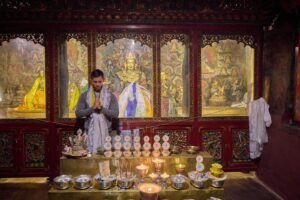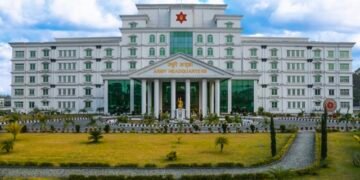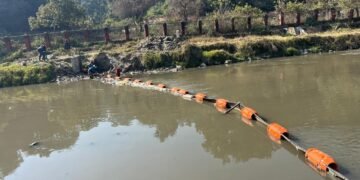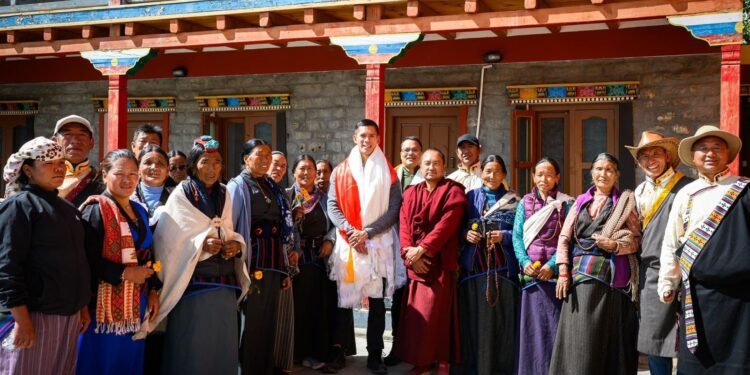Upper Mustang– U.S. Public Affairs Chief Mike Harker made his first visit to the remote Upper Mustang region of Nepal to spotlight ongoing cultural preservation efforts supported by the U.S. Ambassadors Fund for Cultural Preservation (AFCP).
His visit emphasized the U.S. government’s dedication to safeguarding Nepal’s invaluable heritage sites, many of which have been severely impacted by natural disasters and climate change.

Harker toured several historic and religious landmarks, including Dzong Monastery in Dzong Village, Gonpa Gang in Chussang, Lo Gekar in Marang, and several chhortens in Ghemi and Tsarang villages. These sacred sites, vital to Nepal’s cultural and spiritual identity, suffered extensive damage during the 2015 earthquakes and continue to face risks due to the changing climate.
“The restoration of these ancient monasteries is not just about rebuilding structures; it’s about preserving Nepal’s living history,” said Harker. “The United States is proud to stand alongside Nepal in ensuring these cultural treasures endure for generations to come.”

The AFCP, established in 2001, is one of the U.S. Government’s most prominent cultural preservation programs, dedicated to safeguarding cultural sites, objects, and traditions around the world. In Nepal alone, AFCP has funded 28 projects since 2003, helping to restore key cultural and historical sites across the country. The restoration of these sites is not only a tribute to Nepal’s rich history but also symbolizes the strong and enduring partnership between the United States and Nepal.
“Preserving these cultural treasures is a reflection of our deep respect for Nepal’s unique heritage and our commitment to strengthening ties between our nations,” said Harker during his visit. “We are proud to support efforts that ensure these sites can be enjoyed by future generations.”

The restoration work at the monasteries and religious monuments has drawn local and international recognition, highlighting the importance of cultural preservation in fostering mutual understanding between nations. The projects also serve as a reminder of the pressing need to protect vulnerable heritage sites from the growing threats of natural disasters and climate change.
Harker’s visit underscores the importance of the U.S.-Nepal partnership in cultural preservation. These restoration projects serve as a powerful symbol of shared respect for Nepal’s rich history and the continuing collaboration between the two nations.

The work done through the AFCP is not only a testament to cultural diplomacy but also a proactive response to the growing threats that climate change poses to the world’s most vulnerable heritage sites. The restored monasteries and religious structures stand as both a reminder of Nepal’s profound cultural past and a commitment to its future resilience.





















